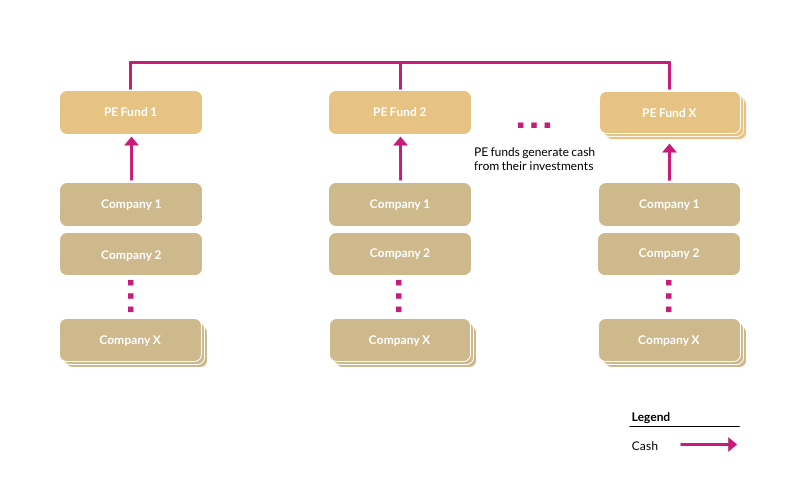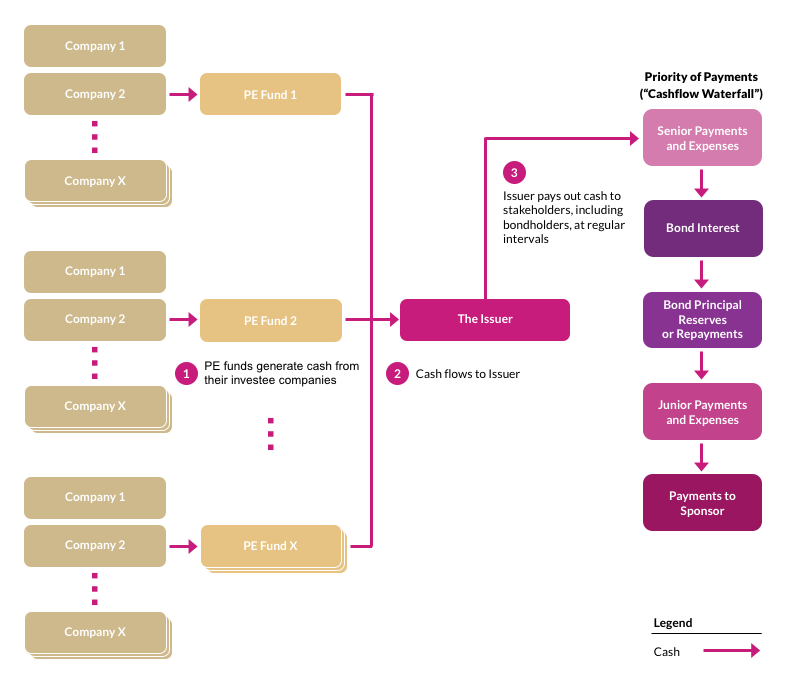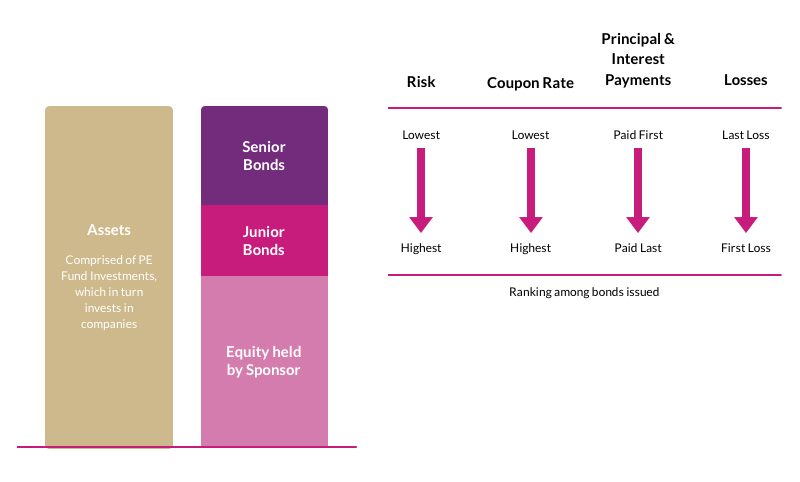Investor Education
Learn More
Asset Base and Structure
1 min read time
Constructing the asset base
A PE Bond issuer must first put together a portfolio of PE funds that will form the asset base to back the bonds issued. PE funds collect cash from their investments in companies, as they monetise or divest their companies.
An ideal PE Bonds asset base must be able to:
- Generate cash at a sufficiently high level to cover the bond obligations (interests and principal repayments) and,
- Sustain the cash generation over the life of the bonds
As such, the two most important criteria in constructing the ideal asset base for a PE Bond issuance are:
- Diversity across vintages, region, GPs and funds to minimize the impact of losses incurred in any one investment
- Issuer’s ability to access quality and reputable PE fund managers

The cash collected from this completed asset portfolio can only be used to service the structure of the asset-backed securities; it cannot be used for any other purposes.
Paying out cash through a pre-defined priority of payments
What the bond issuer does with the cash collected from its underlying assets is strictly dictated by a pre-defined set of rules called the priority of payments. This is commonly known as the ‘waterfall’, describing the way cash flows from the highest priority to the lowest priority. The diagram below illustrates how a typical waterfall may work:

Structuring the PE Bonds
A key feature of asset-backed securities is tranching – different tranches of fixed-income securities can be issued out of the same asset base. PE Bonds are no different. It is up to the bond issuer how many tranches of bonds to issue and the features to structure for each tranche of bond. In general, senior bonds enjoy greater credit protection than junior bonds.

